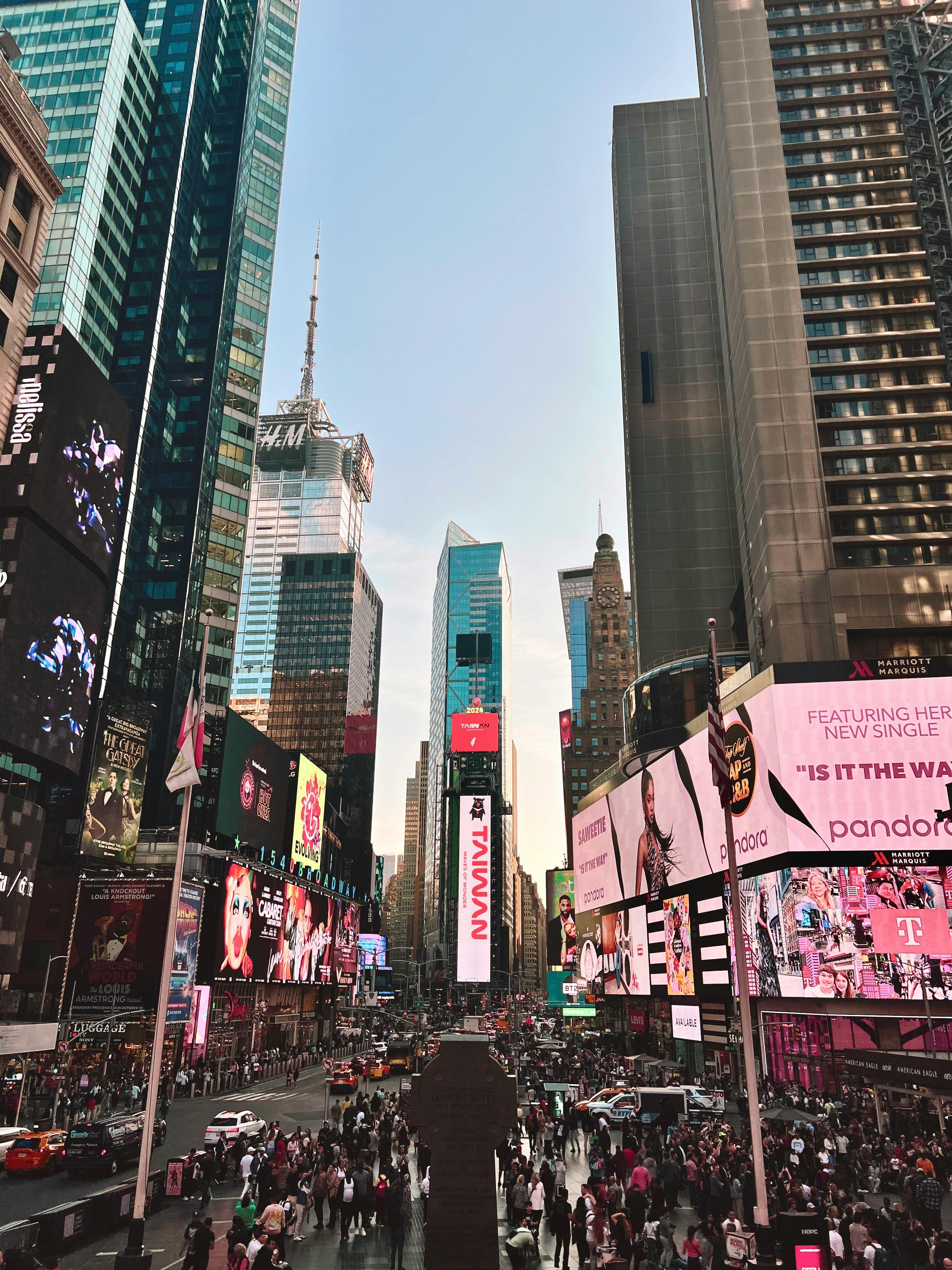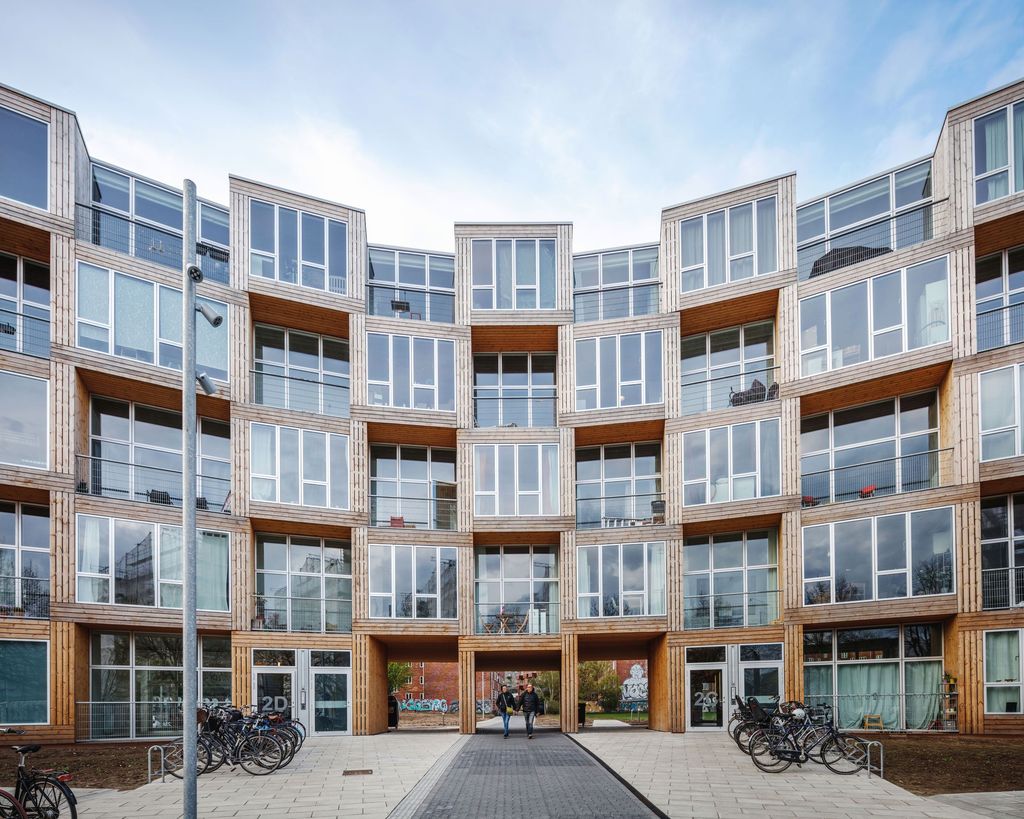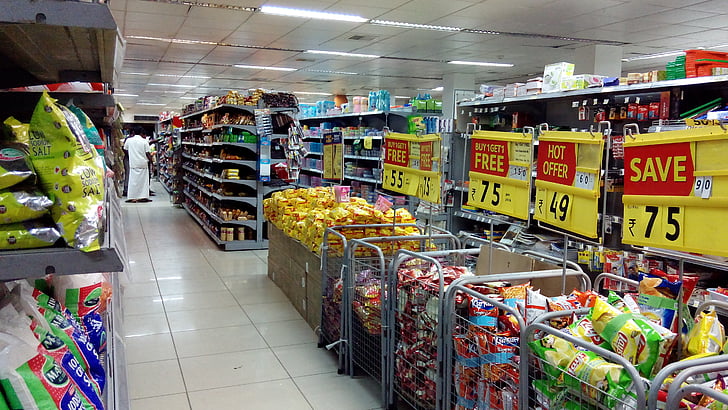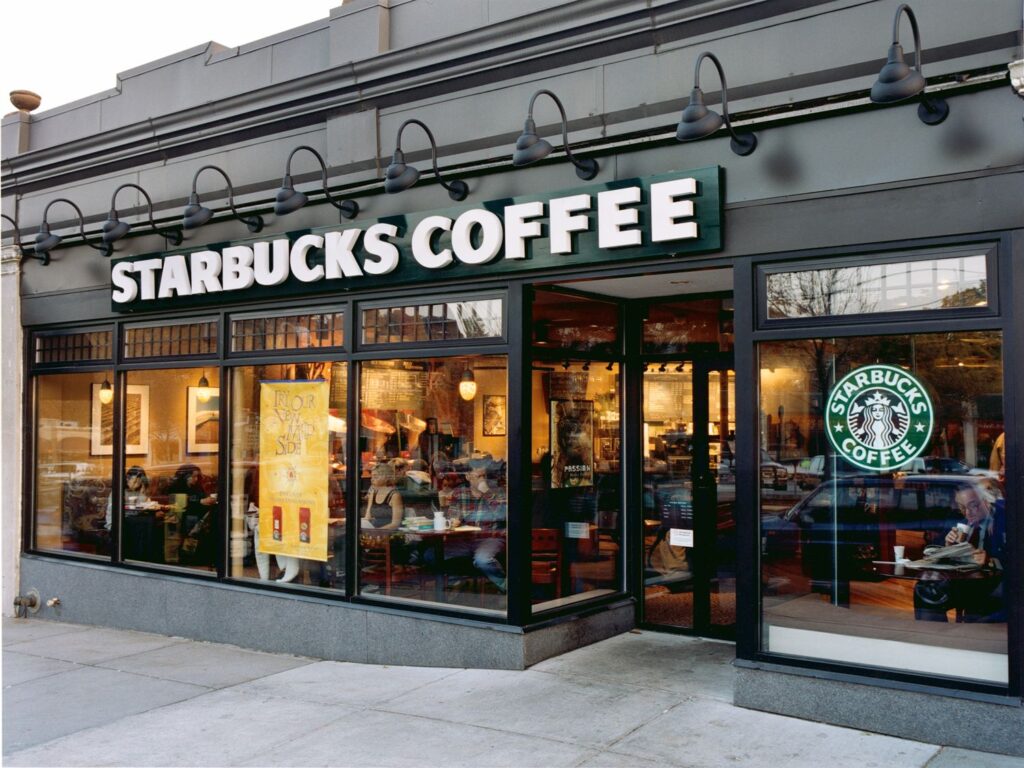
Living in one of America’s vibrant, bustling cities offers an unparalleled experience, from a wealth of employment opportunities to rich cultural options and often, fantastic weather. Places like Washington D.C., Boston, Seattle, and the sprawling metropolises of California draw millions with their promise of cosmopolitan living. However, this allure comes with a formidable price tag. From skyrocketing rents and mortgages to elevated grocery bills and transportation costs, the daily reality in these urban centers can feel like a relentless drain on your finances.
Indeed, the cost of living in these areas often significantly surpasses the national average, making it challenging for residents to feel financially secure. The Council for Community and Economic Research collects vast data showing just how much pricier these areas are across all categories – housing, groceries, utilities, transportation, and more. For instance, in Washington D.C., housing-related expenses are a staggering 2.3 times the national average, while in Boston, average apartment rents soar to $4,157 a month. This environment, further exacerbated by broader economic factors like recent inflation, where shelter has been the ‘largest factor’ behind price increases, means that finding intelligent ways to manage your money isn’t just a good idea—it’s essential.
But here’s the empowering truth: thriving financially in a high-cost city is not only possible but entirely achievable with the right strategies. Frugality, far from being about deprivation, is defined as ‘the quality of being frugal, sparing, thrifty, prudent, or economical in the consumption of resources such as food, time or money, and avoiding waste, lavishness or extravagance.’ It’s a deliberate approach to acquiring goods and services in a restrained manner and resourcefully utilizing what you already have to achieve longer-term goals. This guide, drawing on time-tested principles and practical applications, will empower you to navigate the financial challenges of urban living, showing you exactly how to cut expenses, accumulate more money, and maximize every dollar, turning potential financial hurdles into stepping stones towards a more secure future.

1. **Reevaluate Your Housing Situation**For most city dwellers, housing represents the single largest expense, often consuming a disproportionate chunk of income. In premier urban hubs across the US, this reality is stark. Consider Arlington, Virginia, where housing-related expenses alone are almost twice the national average, with an average home price exceeding $1 million and typical monthly mortgage payments topping $5,000. Similarly, in Los Angeles, housing costs soar 131.5% above the national average, with average home prices nearing $1.35 million and apartment rents around $3,011 a month. This significant financial outlay makes housing the primary battleground for frugal living in an expensive city, and addressing it first offers the most substantial potential for savings.
Recognizing the immense impact of housing costs is the first step toward reclaiming financial control. Practical strategies abound for reducing this burden, even in the most competitive markets. One direct approach is to consider neighborhoods slightly outside the city’s absolute core that offer better value, or to explore options for downsizing your living space. Embracing the idea of a roommate is another highly effective method, instantly halving your largest expense. Additionally, researching the availability of rent-controlled apartments, though often challenging to secure, can provide long-term stability against rising rental prices. These conscious choices, while sometimes requiring a shift in lifestyle, are direct applications of ‘seeking efficiency’ and ‘avoiding traps’ in the pursuit of greater financial freedom.
The savings generated by reevaluating your housing situation can be truly transformative, freeing up hundreds or even thousands of dollars each month that can be redirected towards savings, investments, or other financial goals. To effectively manage and track these critical adjustments, tools like Life Planner’s Expense Tracker become indispensable. This feature allows you to monitor your housing costs with precision, enabling you to see the immediate impact of your changes and make further adjustments as needed. It’s about empowering you to make informed decisions, ensuring that your most significant expenditure aligns with your long-term financial well-being, rather than dictating your entire budget.
By taking proactive steps to optimize your housing, you’re not just saving money; you’re creating a more sustainable financial foundation in your expensive urban environment. This foundational shift liberates resources that can be deployed to bolster other areas of your personal finance, reinforcing the core tenets of frugality: ‘resourceful use of already-owned economic goods and services, to achieve a longer term goal.’ It allows you to invest more deeply in your financial future, regardless of the high-cost postcode you call home.

2. **Take Advantage of Public Transportation**In many high-cost US cities, owning a car is not just a convenience; it’s a significant financial drain that extends far beyond the initial purchase price. The ongoing expenses of insurance, gasoline, maintenance, and especially parking fees can quickly accumulate, turning a perceived necessity into a luxury few urban residents can truly afford. Los Angeles, for instance, is notorious for traffic, which drives transportation costs 28% above the national average, making personal vehicle ownership particularly burdensome. Even in cities with better infrastructure, these costs are relentlessly high, challenging the financial resilience of even well-compensated individuals.
Fortunately, most expensive cities offer robust alternatives that align perfectly with frugal living principles. Embracing public transportation—whether it’s an extensive subway, bus, or tram system—can yield substantial savings. Washington D.C., for example, boasts a ‘wide-ranging bus and metro system’ that makes getting around ‘affordable.’ Beyond public transit, opting for biking or walking whenever feasible not only eliminates direct transportation costs but also contributes to your health and the environment. This shift is a prime example of ’embracing cost-free options’ and ‘seeking efficiency,’ transforming a major expense into either a minimal one or a source of free activity.
Integrating public transportation or active commuting into your daily routine requires a mindset shift but offers immense practical benefits. This means planning your routes, perhaps investing in a good quality bicycle, and taking advantage of city-specific transit passes that offer better value. The goal is to minimize reliance on personal vehicles, or eliminate them entirely if your circumstances allow. This change actively ‘curbs costly habits’ associated with car ownership, pushing you towards a more economically sound lifestyle that doesn’t sacrifice mobility.
To effectively manage your transportation budget, Life Planner’s Budgeting Tools are invaluable. They allow you to meticulously track your spending on public transit, rideshares, or bike maintenance, and compare it against the hefty costs of car ownership. By visualizing these figures, you can make informed decisions to ‘allocate your transportation costs effectively,’ ensuring you stay within your budget and maximize your savings. This active monitoring empowers you to adjust your habits and truly leverage the financial advantages of urban public transport and active commuting, turning a necessity into an opportunity for significant savings.
Read more about: I’m a Race Driver: 7 Apex Machines Pushing the Limits of Speed and Engineering

3. **Shop at Discount Grocery Stores**Groceries represent another substantial and often underestimated expense for city dwellers, particularly in high-cost areas where even basic foodstuffs can command premium prices. The cost of living index often highlights this, with cities like Bethesda reporting grocery costs 7.6% above the national average, and Washington D.C. seeing them rise 4% above. These seemingly modest percentage increases compound over time, silently eroding your budget if not actively managed. The convenience of neighborhood stores often comes at a steep price, making it crucial to adopt savvy shopping strategies to maintain a frugal lifestyle without sacrificing nutritional needs.
The key to unlocking savings on food lies in actively seeking out more economical purchasing channels. Discount grocery chains, which often focus on efficiency and volume, can offer significantly lower prices on everyday essentials. Local farmer’s markets, especially towards the end of their operating hours, can be excellent sources for fresh produce at reduced costs, while also supporting local agriculture. Warehouse clubs provide opportunities to ‘stock up on essentials at lower prices,’ though they often require membership and bulk purchases, necessitating careful planning to avoid waste. These methods embody ‘detecting and avoiding manipulative advertising’ and ‘staying well-informed about local circumstances and both market and product/service realities’ to make the most of your food budget.
Beyond just saving money, adopting a more discerning approach to grocery shopping can also contribute to a healthier lifestyle. As the principles of frugality suggest, it ‘may contribute to health by leading people to avoid products that are both expensive and unhealthy when used to excess.’ By focusing on staple ingredients and planning meals, you inherently reduce reliance on processed, pre-packaged, and often more expensive convenience foods. This leads to healthier eating habits while simultaneously shrinking your grocery bill, demonstrating how financial prudence can positively impact multiple aspects of your well-being.
To keep a tight rein on your grocery spending and ensure you’re making the most of these frugal strategies, Life Planner’s Expense Tracker is an indispensable resource. By meticulously logging your grocery purchases, you gain clear visibility into your spending patterns, allowing you to ‘keep an eye on your grocery spending and identify areas where you can cut back.’ This granular insight empowers you to optimize your shopping trips, make smarter choices about where and what to buy, and ultimately free up more funds for your savings goals, proving that even in high-cost cities, delicious and healthy eating doesn’t have to break the bank.
Read more about: The 11 Secrets to Finding the Best Deals on 6 Different Kinds of Car Tires

4. **Embrace the “No-Spend” Challenge**In the constant whirlwind of urban consumerism, where every corner offers a new temptation, the ‘no-spend’ challenge emerges as a powerful antidote. This strategy involves setting a specific period—be it a day, a week, or even a month—during which you commit to avoiding all non-essential purchases. It’s an immersive exercise in ‘fiscal self-restraint’ and ‘suppressing instant gratification,’ forcing a direct confrontation with your spending habits and revealing just how much discretionary money might be leaking from your budget in an expensive city. The cumulative effect of small, seemingly insignificant expenditures can be astonishing, and this challenge brings that reality into sharp focus.
Implementing a no-spend challenge requires clear personal guidelines: define what constitutes an ‘essential’ purchase (e.g., rent, groceries, utilities, critical transportation) versus a ‘non-essential’ one (e.g., dining out, new clothing, entertainment, impulse buys). This clarity is crucial for success. Start small, perhaps with a no-spend day, then extend it to a weekend or a full week. The experience is not just about saving money in the short term, but more profoundly, about reassessing your values, identifying true needs versus wants, and developing a stronger sense of financial discipline. It’s a direct application of ‘curbing costly habits’ and provides immediate feedback on areas for improvement.
The benefits of undertaking a no-spend challenge extend far beyond the immediate savings. It serves as an invaluable opportunity to ‘reassess your spending habits and cut out unnecessary expenses’ that may have become ingrained. Many participants discover they can live quite comfortably with far less than they previously thought, fostering a greater appreciation for existing resources and creative alternatives. This practice also strengthens your ability to resist manipulative advertising and expensive social norms, aligning your consumption with your personal financial goals rather than external pressures. It builds a crucial muscle for long-term frugal living.
To make your no-spend challenge even more effective, leverage Life Planner’s Savings Goal Tracking Features. By setting a specific savings goal for the duration of your challenge, you transform an abstract exercise into a quantifiable achievement. This app allows you to monitor your progress, celebrate milestones, and visualize the impact of your efforts, providing strong motivation to stick to your commitment. It reinforces the idea that every choice, every avoided non-essential purchase, contributes directly to your financial health. By actively engaging with this challenge, you equip yourself with the insights and discipline needed to sustain a truly frugal and empowered lifestyle in any high-cost urban environment.

5. **Dine in More Often**The culinary landscape of high-cost cities like San Diego, with its “wide-ranging restaurant scene,” or Los Angeles, known for its “excess and glamor,” can be incredibly tempting. Dining out, however, consistently ranks as one of the most insidious drains on an urban dweller’s budget. The convenience of not cooking, the allure of new flavors, and the social aspect all contribute to expenses that can quickly spiral out of control, silently eroding the financial foundation you’re diligently trying to build.
Shifting your default from dining out to cooking at home is a powerful frugal strategy that yields immediate and substantial savings. By focusing on creating healthy, delicious meals in your own kitchen, you instantly bypass the significant markups associated with restaurant overheads, labor, and profit margins. This approach allows you to control ingredient quality and portion sizes, often leading to healthier eating habits, which aligns with the frugal principle that it “may contribute to health by leading people to avoid products that are both expensive and unhealthy when used to excess.”
To truly maximize savings, integrate this strategy with others. Planning your meals for the week enables you to create a precise grocery list, which can then be fulfilled by “shopping at discount grocery chains, local farmer’s markets, or warehouse clubs to stock up on essentials at lower prices,” as previously advised. Consider batch cooking on weekends, preparing larger quantities of meals that can be portioned and enjoyed throughout the week. This not only saves money but also time during busy weekdays, embodying the ‘seeking efficiency’ aspect of frugality.
Should the desire to experience the city’s vibrant food scene become irresistible, conscious dining can still be practiced. Research less expensive local spots that offer great value or seek out happy hour deals, which often provide discounted food and drinks. Opt for lunch specials over dinner, or share appetizers and entrées with a friend. These aren’t about deprivation, but rather about making informed choices that satisfy your cravings without compromising your financial goals, aligning with the idea of ‘suppressing instant gratification by means of fiscal self-restraint.’
To keep a firm grip on your dining expenses, Life Planner’s Budgeting Tools are indispensable. By meticulously tracking every dollar spent on food, both at home and when dining out, you gain clear visibility into your spending patterns. This empowers you to “monitor your dining expenses and make sure you stay within your budget,” ensuring that even occasional indulgences are planned and accounted for, preventing them from derailing your frugal living efforts in your high-cost city.
Read more about: Why Are Used Car Prices Still Soaring? Unpacking the Economic Reasons No One Tells You

6. **Find Free or Low-Cost Entertainment**City living often presents a dazzling array of entertainment options, from Broadway shows to exclusive concerts and high-end events. While these experiences can be enticing, their cumulative cost can be a major budget breaker in places like Boston, with its “unparalleled collection of universities, hospitals, historical sites,” or San Diego, famed for its “world-class zoo, museums.” The good news is that living in an expensive city doesn’t mean sacrificing enjoyment; it simply means redefining what constitutes valuable entertainment and embracing readily available, often overlooked, alternatives.
Many high-cost cities are treasure troves of free or remarkably affordable activities, perfectly aligning with the frugal principle of “embracing cost-free options.” Washington D.C., for example, is renowned for its “numerous museums and historical sites [that] are free to visit.” Similarly, Seattle, with its “strong emphasis on the outdoors,” offers “Discovery Park,” a “massive 560 acres” providing “miles of trails and shoreline” – all at no cost. Explore local parks, public gardens like the Brooklyn Botanic Garden, or community-sponsored events such as outdoor concerts, free movie screenings, or seasonal festivals, which offer rich cultural experiences without the hefty price tag.
Actively engaging with your city’s public offerings can be incredibly rewarding. Beyond the well-known landmarks, seek out local libraries for free workshops and book clubs, or university campuses for public lectures and student performances that are often free or minimally priced. Walking tours, exploring diverse neighborhoods, or simply enjoying the natural beauty that often frames these urban centers, such as the “Olympic Mountains to the west and the Cascade Mountains to the east” of Seattle, provide meaningful experiences that cost nothing but your time. This resourceful use of available amenities demonstrates a commitment to ‘defying expensive social norms’ and finding joy in accessible pleasures.
For those rare occasions when a paid event is desired, look for discount days, student or senior rates if applicable, or matinee showings. Many cultural institutions have specific days or hours with reduced admission, or offer free admission for residents on certain dates. Always check the official websites or local event listings to stay “well-informed about local circumstances and both market and product/service realities,” ensuring you seize the best value without compromising your commitment to frugal living.
To maintain control over your entertainment budget, Life Planner’s Expense Tracker is an invaluable ally. By logging all your entertainment expenditures, whether it’s a museum ticket or a happy hour outing, you can “track your entertainment expenses and find ways to cut back.” This clear overview allows you to identify patterns, make conscious choices about where your money is going, and ensure that your leisure pursuits contribute to your overall well-being without jeopardizing your financial stability.
Read more about: The Essential DIY Car Maintenance Tasks That Can Save You $3,000 (Or More!) In Repairs

7. **Automate Savings and Investments**Even amidst the relentless financial pressures of a high-cost city, prioritizing savings and investments is not just advisable—it’s absolutely critical for long-term financial security. The unique challenge of urban living necessitates an even more disciplined approach, making automation an indispensable tool in your frugal arsenal. Frugality, defined as the “resourceful use of already-owned economic goods and services, to achieve a longer term goal,” directly points to the necessity of building financial reserves, and automation is the most effortless way to achieve this.
The power of automating your savings lies in its ability to remove human emotion and procrastination from the equation. By setting up automatic transfers from your checking account to your savings or investment accounts immediately after your paycheck arrives, you embrace “fiscal self-restraint” and proactively “suppress instant gratification.” This ensures that a portion of your income is consistently allocated to your future before you even have a chance to spend it on discretionary items, regardless of the temptations an expensive city presents.
Start by determining a realistic percentage or fixed amount of your income to save or invest each pay period. Even small, consistent contributions can accumulate significantly over time, leveraging the power of compound interest. Consider dedicating a portion to an emergency fund, aiming for three to six months of living expenses, especially crucial in unpredictable urban environments. Beyond that, direct funds towards retirement accounts like a 401(k) or IRA, or a brokerage account for long-term wealth building, understanding that these are vital ‘longer term goals’.
This proactive approach of “curbing costly habits” and “seeking efficiency” through automation empowers you to build wealth steadily, despite the elevated cost of living. It instills a habit of financial discipline that transcends the immediate challenges of urban expenses, transforming your monthly financial routine into a powerful engine for future prosperity. You’re not just saving money; you’re actively constructing a safety net and a runway for financial independence, reinforcing the empowering and informative tone of Lifehacker’s advice.
Life Planner’s Savings Goal Tracking Features are perfectly designed to complement this automated strategy. By setting clear, quantifiable savings goals within the app – perhaps for a down payment on a home, a significant investment, or even a future early retirement – you gain a powerful visual representation of your progress. The app helps “keep your savings goals on track” by allowing you to monitor how each automated transfer brings you closer to your objectives, providing constant motivation and reinforcing the tangible benefits of your frugal choices.
By embracing automated savings and investments, you ensure that your financial future is not left to chance or subject to the daily grind of urban expenses. You actively ‘optimize’ your resources, securing a path to wealth accumulation and true financial freedom, even while navigating the most demanding economic landscapes. This foundational strategy guarantees that you are always building towards a more secure future, regardless of how much you pay for rent or groceries.
**Conclusion**
Navigating the financial currents of America’s most expensive cities demands more than just careful budgeting; it requires a proactive, strategic, and resourceful approach to living. This guide has unveiled foundational and advanced techniques, proving that frugal living is not about sacrificing the vibrancy of urban life, but about intelligently optimizing your resources to thrive within it. From reshaping your largest expenses like housing and transportation, to conscious decisions about dining and entertainment, and finally, empowering your future through automated savings, every step contributes to a more secure and fulfilling urban experience.
Remember, frugality, at its core, is an empowering philosophy—a deliberate choice to align your consumption with your long-term goals and values, rather than succumbing to external pressures or the illusion of scarcity. It’s about ‘getting the most you possibly can from your money’ and creating a life rich in experiences, not just expenditures. By adopting these practical, actionable strategies, you are not merely cutting costs; you are taking absolute control of your financial destiny, turning the perceived challenges of city living into distinct opportunities for growth and prosperity.
The journey to financial mastery in a high-cost city is made simpler and more effective with the right tools. Life Planner’s integrated features – the Expense Tracker, Budgeting Tools, and Savings Goal Tracking Features – are your essential companions in this endeavor. They provide the clarity, control, and motivation needed to transform these strategies into sustainable habits, ensuring you stay on top of your finances and consistently move towards your wealth-building aspirations.
Read more about: Unmasking the Price Tag: 11 Sneaky Smart Home Costs That Can Quietly Drain Your Wallet
Are you ready to embrace a smarter, more empowered way of living in your high-cost city? The time to take action is now. Download the Life Planner app today and equip yourself with the insights and discipline necessary to track your spending, set ambitious savings goals, and master your budget. Start leveraging every dollar to its fullest potential and embark on your path to financial freedom, proving that even in the most expensive urban landscapes, true abundance is within your reach.



